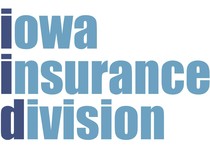|
Having trouble viewing this email? View it as a Web page.

|
|
|
|
Consumer Connection: What is an Insurance Declaration Page?

By Sonya Sellmeyer, Consumer Advocacy Officer for the Iowa Insurance Division
An insurance declaration page also known as a “dec page” summarizes the insurance coverage provided by the policy. The declaration page is usually the first page of your policy, and you should receive a new declaration page for each renewal period. If you don’t have a declaration page, request a new one from your agent or look at your insurance company’s online insurance portal for a copy.
What does a declaration page contain?
- The name and address of the insurance company
- The name and address of the insured
- The type of policy such as auto or home
- The policy number, dates of coverage, and if the policy is a renewal
- The agent’s name, address, and phone number
- The drivers, vehicles, or residence insured by the policy
- Lienholders on vehicles or the name of the mortgage company
- The coverages provided by the policy
- The limits or maximum amount provided on each coverage per accident
- The premium charged for coverages plus any discounts on your premium
- The deductible or amount you must pay before the company makes a payment on the loss
- Endorsements or options on the policy which provide more or less coverage and may change your premium
- Exclusions in the policy are not listed on a declaration page
The declaration page for a homeowners policy may also list if the policy provides actual cash value or replacement cost. Actual cash value is the replacement cost less any depreciation. The insurance carrier figures the depreciation amount by the age and condition of the property. Replacement cost is the actual cost to replace the property to put you back in a similar financial position.
Life insurance policies may also contain a summary document labeled as a declaration page, policy statement or summary. An individual or employer-based health plan will provide a document called a summary of benefits and coverage.
Once you receive an insurance policy you should check it over to ensure it includes the coverages you want and thought you were purchasing are represented correctly.
- Ensure your name and address are correct, and all eligible drivers are listed on an auto insurance declaration page.
- Check the riders or endorsements on the policy, such as sump pump coverage.
- Are the deductibles and coverage amounts correct and what you discussed with your agent?
- Have discounts for items such as a home alarm system been applied?
- If you find an error contact your agent immediately to address the problem, as errors in the policy information may cause problems when filing a claim.
Remember your declaration page is only a summary of your coverage. You need to read and understand your entire policy. If you find errors in your policy or have questions, please contact your insurance agent.
###
|
|
|
|
|